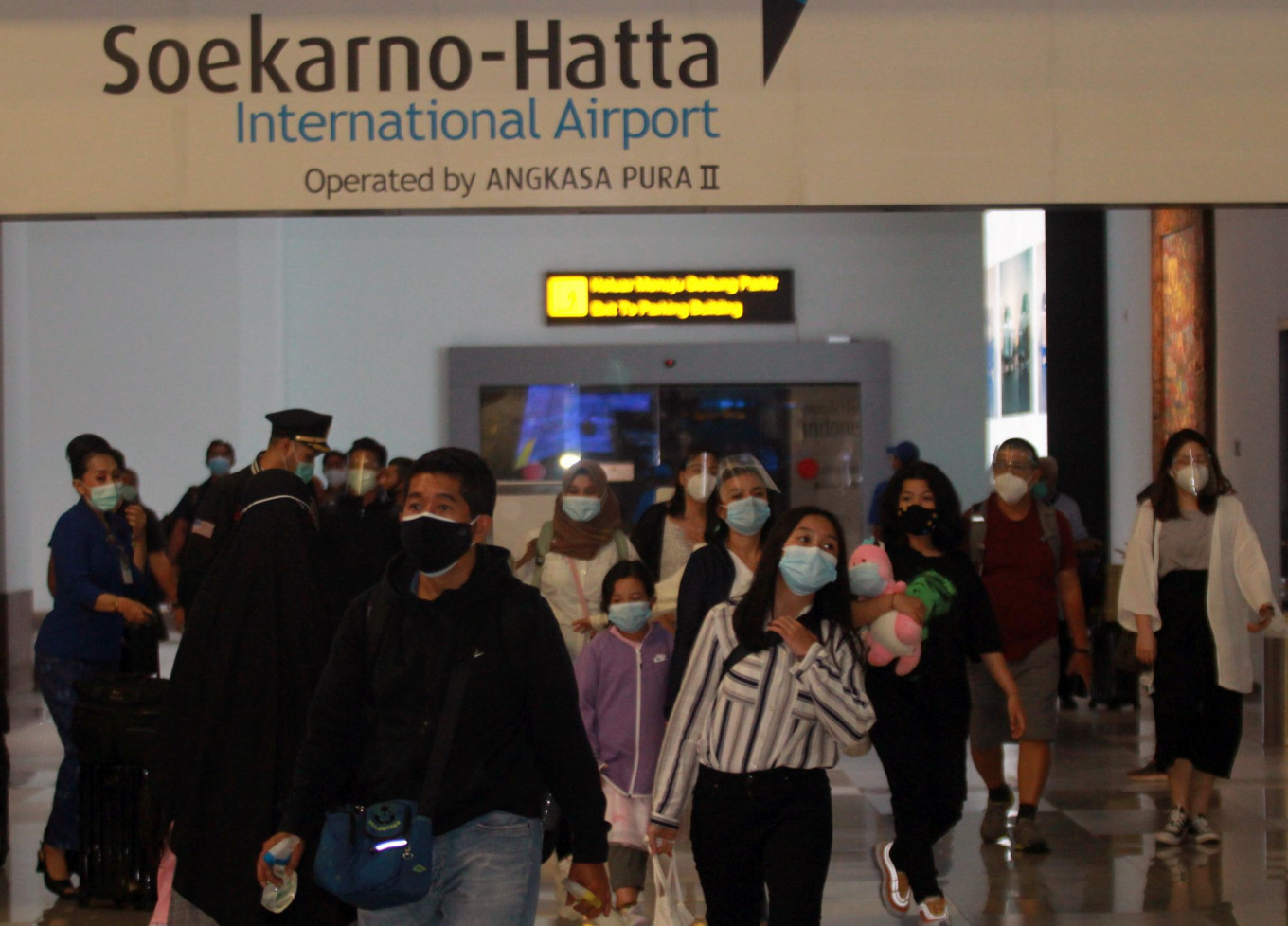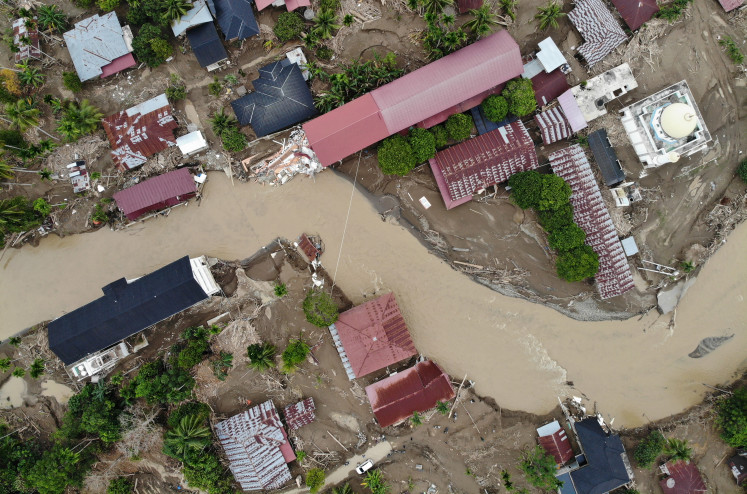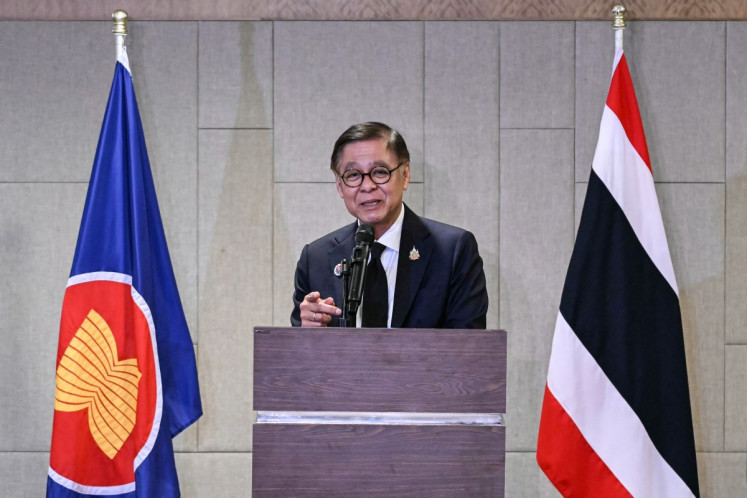Popular Reads
Top Results
Can't find what you're looking for?
View all search resultsPopular Reads
Top Results
Can't find what you're looking for?
View all search resultsTravel corridor arrangements: Between economic and health interests
Travel corridor arrangements vary depending on the airport in terms of preflight requirements and COVID-19 quarantine procedures for travelers, so it is not clear that the scheme can fulfill the double duty of protecting both economic and health interests.
Change text size
Gift Premium Articles
to Anyone
Jakarta
It has been a year since COVID-19 restrictions across the globe made international travel a thing of the past. The impacts of the pandemic did not only cause the collapse of public health systems, but it has also obliterated economic sectors. In an attempt to restore essential travel, countries have set up travel corridor arrangements to revive ailing domestic economies while maintaining low infection rates at the same time.
I am one of the few people who were fortunate to be able to travel amid the pandemic, flying from Jakarta to Yangon, Myanmar. Indeed, it was really challenging even before I hopped on the flight in my mask and face shield, and with my handy bottle of hand sanitizer.
Thanks to the pandemic, I had to transit in Singapore and then Malaysia, due to the different procedures in each country. These included the validity period of COVID-19 test results, flight availability, sudden visa requirements and transit restrictions for passengers arriving from certain cities.
What I observed while passing through the different airports in Indonesia, Singapore, Malaysia and Myanmar was how their health protocols were applied. Once we landed at Singapore Changi Airport, we were escorted to either a common transit gate to wait for our next flight or an airport transit hotel. Transit passengers were not allowed to wander around the airport. As a matter of fact, Changi airport was not the busy travel hub that I remembered, as most shops were closed and the terminal looked empty.
It was completely different at Malaysia’s Kuala Lumpur International Airport (KLIA), where transit passengers were allowed to roam freely in the main terminal as well as the airport annex. As expected, there were not many travelers, but shops selling essential needs were open, probably because passengers were allowed inside the terminal.
At Yangon International Airport, airport authorities and officers from the Ministry of Health strictly recorded passengers’ data and then transported them via a shuttle service to a designated quarantine hotel. Foreigners were taken to one hotel, where we were required to self-quarantine for exactly two weeks.
Another interesting observation was the rather long time that passed between arriving flights at the three airports, which I guess was intended to enable airport authorities and health officials to manage and control the arrival of international travelers. On the other hand, although Soekarno-Hatta International Airport was not as busy as before the pandemic, passengers on different flights were still arriving almost at the same time.
The most interesting aspect was the quarantine process and period. While some studies have suggested that the coronavirus may not be detected in the early days of exposure, each country applied different quarantine periods and different swab testing frequencies and intervals for travelers.
Singapore and Myanmar, for instance, imposed a very strict quarantine period of 14 days and required two polymerase chain reaction (PCR) tests. Once you exit the immigration counters in these countries, you are transported on a bus to the designated quarantine hotel, accompanied by airport authorities. The airport authorities have already booked your hotel for the quarantine period, so you have no options to stay at different hotel. The quarantine hotels are not open to regular guests.
Meanwhile, in Indonesia, the quarantine period is currently five days with two PCR tests. As soon as you exit the airport, salespeople from designated quarantine hotels and designated taxi companies offer their services to arriving travelers who do not have bookings yet. The good thing is that there are many hotel options for travelers to choose from for their quarantine period, ranging from three-star to five-star hotels.
Interestingly, the designated quarantine hotels also accept regular guests seeking staycations.
According to February 2021 data from the national COVID-19 task force, 1.1 percent of a total of 1,060 international travelers tested positive for the virus. Moreover, the task force stressed the fact that the results of the mandatory predeparture COVID tests for international travelers were not always valid. Therefore, applying a set of very strict procedures to welcome these travelers at airports, including quarantine process and regulations, are ultimately important in order to contain the spread of the virus.
My experience traveling during COVID-19 showed that each country has adopted different arrival procedures and quarantine protocols. I guess this depends mainly on the availability of their resources and interests in view of restoring essential business services. While it is clear that the generally prescribed quarantine period is 14 days, there is no prescribed method for how best to manage airports amid the pandemic.
The health sector advises travelers to quarantine for 14 days without taking an immediate swab test, but others may think differently in terms of issues of practicality rather than what should be done from the perspective of public health.
With these different standards for travel corridor arrangements, is it possible to protect business interests and public health at the same time?
***
The writer is a preparedness and response officer at the ASEAN Emergency Response and Assessment Team (ASEAN-ERAT).










